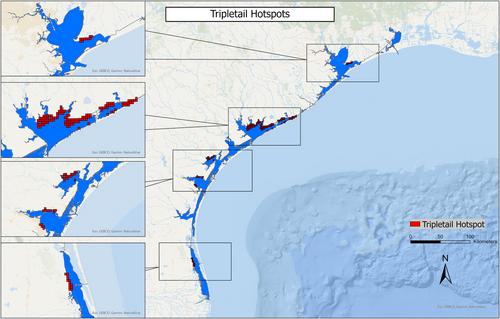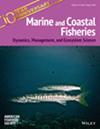Estuarine residency and habitat preferences of Atlantic Tripletail in the northwestern Gulf of Mexico
Abstract
Objective
The Atlantic Tripletail Lobotes surinamensis is a globally distributed subtropical and tropical fish species that inhabits estuaries throughout the northern Gulf of Mexico (GOM), particularly during warm months. Little is known about distribution and residency patterns within estuaries, as the species is rarely caught in the recreational fishery, and virtually no commercial fishery exists for the species in the GOM.
Methods
We used data from a long-term fishery-independent gill-net survey to model estuarine distribution throughout Texas and to relate environmental variables to the Atlantic Tripletail catch.
Result
Although there were no observable temporal trends in catch over the time series (1990–2022), the most recent 6 years included record catch in six of the 10 major Texas estuaries, possibly indicating a recent pulse in abundance. Catch throughout the time series was spatially aggregated in a small number of “hot spots” observed coastwide. Latitude was the best predictor of catch, although wind fetch and wind aspect (wind direction in relation to shoreline direction) were important predictors, and catch was highest near GOM inlets. The Texas Parks and Wildlife Department gill-net sampling program caught a range of Atlantic Tripletail between 171 and 880 mm total length, indicating a potential gear bias against juveniles.
Conclusion
Despite this gear bias, these data shed light on the factors that drive Atlantic Tripletail estuarine distribution and abundance in the northwestern GOM. Wind-driven passive movements in the estuary, combined with active selection of polyhaline habitats near GOM inlets, might be primary drivers of Atlantic Tripletail catch, thus supporting findings from previous studies.


 求助内容:
求助内容: 应助结果提醒方式:
应助结果提醒方式:


